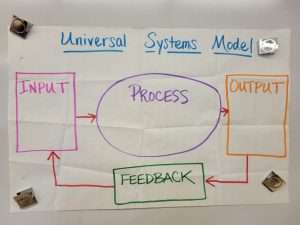Hello!
Soon, each student will be given their e-portfolio!
What is an e-portfolio?
It is like a mini version of the blog you are reading, created using WordPress. On the e-portfolio, students will post pictures, reflections, and answers to assessment questions, which will allow us all to give them feedback about how they are doing.
Who can access the e-portfolio?
The e-portfolio access point is on the blog, but requires a password, which I will send in e-mail to everyone. Each student’s e-port is only accessible by the teacher, student, principal, and parents. It is not public, nor is it accessible by other students. Parents use their own access user ID and password, and students are advised to keep their passwords private.
How often will students put something on the e-portfolio?
Typically there will be something once per week, but it depends on what we are doing and whether we have a long or short week.
Where do we find the questions for e-portfolios?
Students will find the questions on this blog. That way if they are absent, they can still find them.
When are e-portfolios due?
I tell students to try and finish the e-portfolio entry by one week from the time it is assigned.
When I go to assess entries, if I find one is not done, I will go ahead and publish it in its incomplete version, so parents and the student can see there is one not finished. If a student were to have many entries not complete, I will also email home. E-portfolios are an important part of assessment, so please make sure they do get done.
Can a student get help for answering e-portfolio questions?
Students can use their journals and blue binders to answer questions. They are not to use the internet, nor are they to receive any help from parents at home. Parents CAN answer questions about spelling or grammar, of course, but they shouldn’t be writing the answers by dictation for students or editing the material for them prior to posting. Both parents and teacher can give feedback, though, in the comments, after the entry is posted, about how they can improve either their content or communication skills.
Students are not to cut and paste from websites, nor use any other digital tools, to create or to copy content.
The questions are often personal in nature, so I am really asking students to do their own thinking about the connections they are making with the curriculum.
I also collect writing samples in class so I can see how their writing in person matches with what they are producing online, so it is best if they do not cut and paste or get writing help.
How does a student get feedback?
Both teacher and parents can give feedback by making a comment directly on the e-portfolio. It is important it is STRENGTH-BASED FEEDBACK. Start with what you notice is done well, and then choose one to two things maximum to comment on that they could develop for next time. This may include things like language arts writing skills or organization of their response.
When the teacher provides feedback, you will see a reference to the PROFICIENCY SCALE.
Take into mind e-portfolio entries in our class function for assesment of multiple things at the same time, given the integrated nature of subjects. For example, on a single entry, I may be able to look at understandings of socials and science, while also looking at language arts sentence structure.
How should answers be given?
Answers need to be in complete sentences or paragraphs as appropriate. If it asks for a list, then give a list, otherwise, please use complete sentences.
How long should answers be?
Answers need to answer the question. But, more writing does not equal higher quality. I will read whatever they post, but they do not need to write a novel! They also need to be aware of their time. Set aside the 30-40 minutes after school each day to catch up, and use the time wisely when given in class. Focus on giving the answer, not on writing a long story. I will provide examples in class of what I mean, so they can see what I mean before we start.
When will this begin?
Soon! I plan to get e-portfolios out to students by end of week, and then parents will receive their passwords at some point over the next two weeks, as I have to go in to each of the 24 e-ports individually to set that up, and it takes time.
Stay tuned for more information!
Ms. D



